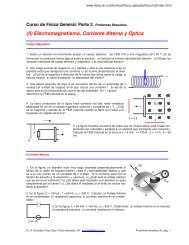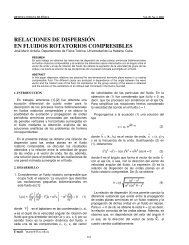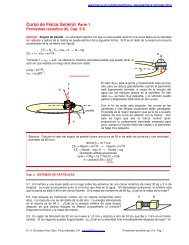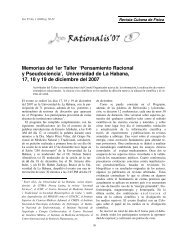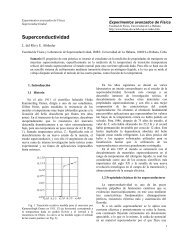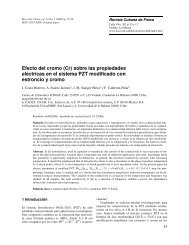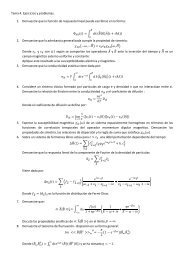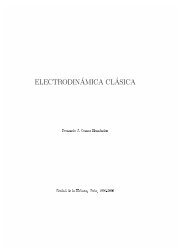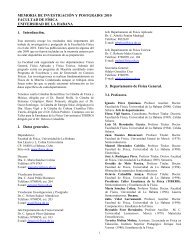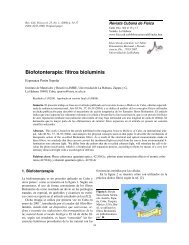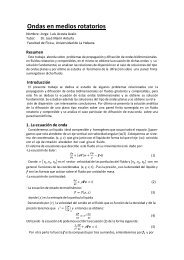Group theory
Group theory
Group theory
You also want an ePaper? Increase the reach of your titles
YUMPU automatically turns print PDFs into web optimized ePapers that Google loves.
28.7 SUBDIVIDING A GROUP• Two cosets X 1 H and X 2 H are identical if, and only if, X2 −1X1 belongs to H. IfX2 −1X1 belongs to H then X 1 = X 2 Y i for some i, andX 1 H = X 2 Y i H = X 2 H,since by the permutation law Y i H = H. Thus the two cosets are identical.Conversely, suppose X 1 H = X 2 H. Then X2 −1X1H = H. But one element ofH (on the left of the equation) is I; thus X2 −1X1 must also be an element of H(on the right). This proves the stated result.• Every element of G is in some left coset XH. This follows trivially since Hcontains I, and so the element X i is in the coset X i H.The final step in establishing Lagrange’s theorem is, as previously, to note thateach coset contains h elements, that the cosets are disjoint and that every one ofthe g elements in G appears in one and only one distinct coset. It follows thatg = kh for some integer k.As noted earlier, Lagrange’s theorem justifies our statement that any group oforder p, where p is prime, must be cyclic and cannot have any proper subgroups:since any subgroup must have an order that divides p, this can only be 1 or p,corresponding to the two trivial subgroups I and the whole group.It may be helpful to see an example worked through explicitly, and we againuse the same six-element group.Find the left cosets of the proper subgroup H of the group G that has table 28.8 as itsmultiplication table.The subgroup consists of the set of elements H = {I, A, B}. We note in passing that it hasorder 3, which, as required by Lagrange’s theorem, is a divisor of 6, the order of G. As inall cases, H itself provides the first (left) coset, formally the cosetIH = {II, IA, IB} = {I, A, B}.We continue by choosing an element not already selected, C say, and formCH = {CI, CA, CB} = {C, D, E}.These two cosets of H exhaust G, and are therefore the only cosets, the index of H in Gbeing equal to 2.This completes the example, but it is useful to demonstrate that it would not havemattered if we had taken D, say, instead of I to form a first cosetDH = {DI, DA, DB} = {D, E, C},and then, from previously unselected elements, picked B, say:The same two cosets would have resulted. BH = {BI, BA, BB} = {B, I, A}.It will be noticed that the cosets are the same groupings of the elementsof G which we earlier noted as being the choice of adjacent column and rowheadings that give the multiplication table its ‘neatest’ appearance. Furthermore,1067



